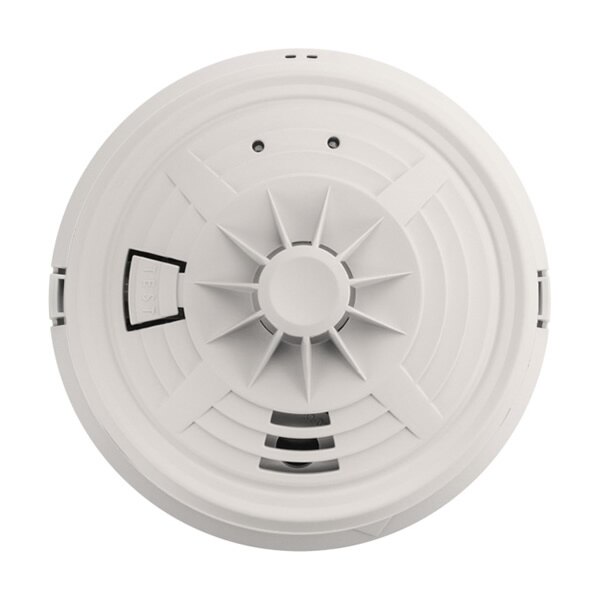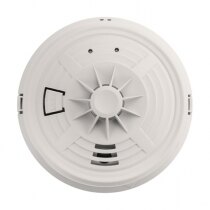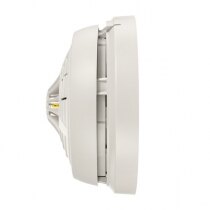-
Contact
Sales & Customer Service
0800 612 6537 support@safelincs.co.uk Live ChatDelivery Enquiries
0800 077 6149 - Resources
Fire & Safety Solutions
CALL OUR TEAM NOW 0800 612 6537
Lines open today 8am - 6pm
Quick Delivery
From £3.19 inc VAT
Live Chat - Online
Instant help & Advice
Trade Discounts
and exclusive pricing
0% Credit Available
Open an account now
5 Star Customer Feedback
Mains Powered Heat Alarm with Alkaline Back-up Battery - BRK 790MBX
Discontinued Product - No Compatible Replacement
Please Note: BRK have withdrawn from the European market and there is no compatible alternative that will fit into your existing system. Since it is not possible to interlink alarms from different manufacturers, new alarms will be needed throughout. The recommended replacement for the whole discontinued BRK 700MBX range is the Kidde Firex series. This will require an electrician to replace your old BRK bases with new Kidde bases.
View alternative products
Discontinued Alarms
A list of replacement smoke and heat alarms for discontinued Kidde Safety and Ei Electronics alarm models.
Product Overview
Interlink
Technical Data
FAQs (1)
Fitted with a replaceable alkaline back-up battery, the BRK 790MBX (also known as 690MBX) is a mains powered heat alarm ideal for areas where a standard smoke alarm would be unsuitable, such as kitchens and garages. Supplied with an easy to install push-fit base, the alarm is designed to detect rapid increases in room temperature and up to 12 smoke and heat alarms can be interlinked via a hardwired connection to ensure an early warning if a fire is detected.
- 230V mains powered heat alarm
- 9V alkaline back-up battery (included)
- 5 year manufacturers warranty
- Please note that BRK and First Alert are no longer manufacturing new stock for the European Market and while the products may have a 2018/19 manufacturing date they still provide a full 10 year lifespan and full warranty cover from date of purchase
- Hardwire interlink with up to 12 compatible devices
- Monitors rate of increase in room temperature
- Suitable for installations needing to comply with BS 5839-6: 2019 Grade D2
- Ideal for kitchens and garages
- Test button facility
- CE marked and Kitemarked to BS 5446-2: 2003
- Dimensions (HxD): 68x140mm
- Product warranty and life commences from date of purchase
The table below shows all the units that can interlink with the BRK mains powered smoke and heat alarms.
600 Series
| Model Number | Type of unit | Type of interlink |
|---|---|---|
| 660MBX | Ionisation Smoke Alarm | Hard wire interlink |
| 670MBX | Optical Smoke Alarm | Hard wire interlink |
| 690MBX | Heat Alarm | Hard wire interlink |
700 Series
| Model Number | Type of unit | Type of interlink |
|---|---|---|
| 760MBX | Ionisation Smoke Alarm | Hard wire interlink |
| 770MBX | Optical Smoke Alarm | Hard wire interlink |
| 790MBX | Heat Alarm | Hard wire interlink |
| 760MRL | Ionisation Smoke Alarm | Hard wire interlink |
| 770MRL | Optical Smoke Alarm | Hard wire interlink |
| 790MRL | Heat Alarm | Hard wire interlink |
| Product Code | BK790MBX |
|---|---|
| Brand | BRK |
| Back-Up Battery | 9V alkaline |
| Dimensions (HxDia) | 68x140mm |
| Operating Temperature | +5 °C to +38 °C |
| Relative Humidity | 10% to 85% Relative Humidity |
| Sound Output | 85dB |
| Weight | 0.33kg |
| Product Datasheets |
Q. What sort of smoke alarm system would I need to install for a HMO?
A.
BS 5839-6 recommends that one or two storey HMOs with an individual floor area of no more than 200sqm (not the total of both floors) should have a Grade D smoke alarm system installed. Grade D refers to mains powered smoke alarms with a back up battery power supply. The alarms can be interlinked either by wire or by radio signal and the system does not require a separate fire alarm panel. For HMOs of 3 storey or higher, a Grade A panel system would need to be installed. This can cover the whole of the building, or can be used just for the communal areas with a separate Grade D system installed for the individual dwellings. For both applications, the level of cover should be a minimum of LD3 (in all escape routes) but this may change according to the fire risk assessment.
Looking for more information?
If you have any questions or would like more information about this product you can ask one of our specialists.
Live Chat Available Now
Direct Telephone
01507 464181
























